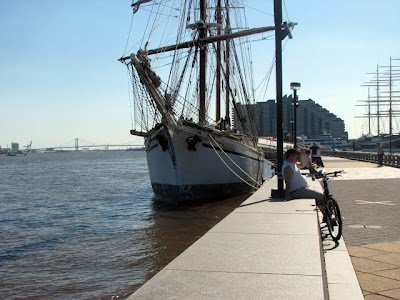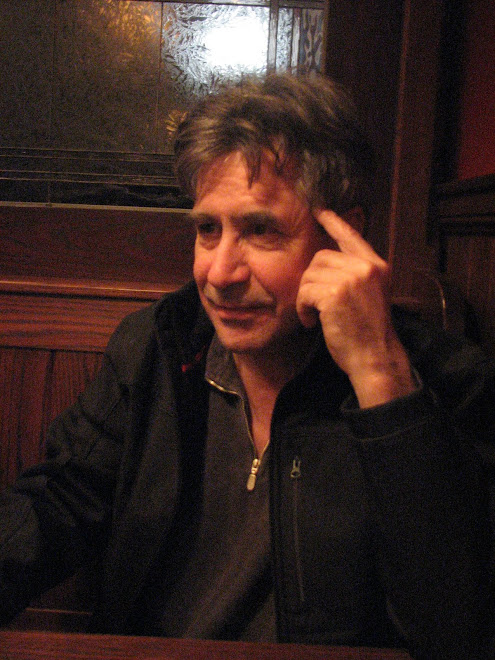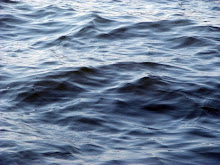'coast / pole' took place during two trips to the North Olympic Coast in Washington State; the first during winter of 2002 and the second in spring of 2003. Driftwood poles were collected locally and carried to specific stretches of coast where, after the day's first high tide began to recede, the poles were set vertically into sand or rocks along the tide line. The pole configurations took shape in response to their surrounding topography. The quantity of poles used in these arrangements ranged between 25 and 100. All constructions washed away with in 24hours. At the outset of this project, a self portrait photograph was taken wearing a hand-made mirror mask and a fishing net that had washed up on the beach.
Eben Goff

Alchemical Vessel
 Point of Arches
Point of Arches
 caption text for coast / pole 4
caption text for coast / pole 4

coast / pole 4
xerox  caption text for coast/pole 1-4
caption text for coast/pole 1-4
 coast / pole 1
coast / pole 1
xerox
 coast / pole 1
coast / pole 1
xerox
 coast / pole 3
coast / pole 3
xerox

coast / pole 2
xerox

coast / pole 2, washed out to sea
xerox
All material courtesy Eben GoffA little time back i posted an artwork, 'coast_poles' by Eben Goff, and at that time I promised some further reading of the piece after giving my readers some time to puzzle out the work for yourselves, to make your own discoveries, find your own opinions.
As promised, here is my email to my friend Lisa (which I also mailed to Eben), in which I give my best understanding of Eben Goff's piece, and his reply to what my guesses were about his work, which really constitutes an explication from Eben on this enchanting artwork .
My guess"Lisa, I didn't realize I was a navisphile, never heard that word, great word!
I think the look of the photos results from a couple of manipulations. First I'm guessing they were shot slightly off focus, with settings to reduce rather than emphasize contrast. If you notice these images are all identified as xerox, and such a post shoot manipulation would allow further degradation of the images. On the other hand, they may have simply been made with a pinhole or other primitive camera and transferred to xerox for a little more softening. I would guess also that he has used a somewhat inferior paper to enhance the effect. I'd guess he's aiming to recreate the feel of an even earlier period, the very early days of photography and the first ethnographic photos of aboriginals in the 'wild'. Many tribespeople objected to being photographed, as they felt it was a way of capturing their soul. Certainly he has captured a bit of the spookines of the earliest photos of the 'other', which is strongly transmitted by the photos of early explorers and ethnographers.
From my reading of Ebens explication or introduction to the piece, it seems the driftwood poles serve two purposes, first to emphasize the contour on the land, whether straight or other, and second to demonstrate the action of the tides, a sort of Rorschach of the tides in a before and after way, because maybe this is more emphatic than high water/low water photos. Going a little deeper, I think the inclusion of the otherworldly shaman (spookiness again) is quite a clue, and indicates we are on spritual ground here. I would suggest ceremonial (possibly ritual) recognition , even evocation, of the spirit of the tides. Akin to the Shinto recognition of Kami. The tides bring and the tides take away, a force to be celebrated, reckoned with, and appeased. Remember that the poles were all driftwood, brought by the sea and the current and the tide, elemental and strong forces of nature. I would guess the geographic coordinates serve as a reminder that we are very much viewing the piece through Western eyes and culture. The work only demonstrates, but does not really allow us entrance into the shaman's ability to enter the 'otherworld'. It does point us in that direction, starting with our makers (latitude and longitude), but encourages us to make a deeper connection with the natural, and the unseen world.
What do you think?
Thanks for your questions, they allowed my to think this work through in a way I hadn't previously done.I just felt it was important and had merit, but without trying to explain it to you I would not have gone into it so deeply. This has taught me something, that the way for me to understand art I feel is important is to attempt to explain it to a knowledgeable and receptive friend. Of course it's all speculation, but I will send this to Eben to get his take, rather than just ask him questions."
Eben's Reply "Thomas, Thanks for getting in touch with me again. I’m back now from summer travels and can do justice to your inquiry. Your observations about my Coast_pole piece are sensitive and on point. I very much appreciate the sincerity of your read on my work.
For you, for me, and for your curious friend there’s a lot to unpack about Coast_pole. While I made it some years ago, it has always felt fresh to me; it’s one of the rare works that has never lost its relevance.
After I made the pole constructions I was had only black and white photographs and some journal entries I’d written while camping out during the construction of the works. I thought for a long time about how I could re-present this piece. I wanted to emph asized the act of looking in or through, as in a window, and to communicate these acts that had taken place at a specific ‘elsewhere’, seen by no one, and immediately washed away. I messed around with the material for years, as paintings, as prints, and once as a stage performance/sculpture made with my talented choreographer friend, Hana van der Kolk that we showed at Dixon Place in NYC.
The resolution that eventually came about was actually quite simple: On one particular evening I pulled out the Coast_pole folders of photos and Xeroxes look at them again with fresh eyes, and what I saw this time around was in fact a complete work. The messy pile of papers that had accumulated from my various efforts to translate the experience was all the work I needed; it was like a second performance. So I selected images from whatever I had. And that’s what you see now on net.
Regarding how the images came to have their ‘patina’, well, out on that wild coast it was often raining, and drops got on the camera lense, maybe wind blew sea spray onto the glass, and other times my hands were cold or I was rushing before the light disappeared and ended up with blurry photographs. In selecting the photos used to represent the works, I was attracted to those images conveyed some atmosphere of the place, where you could feel the weather. But just b&w photos, (enlarged, framed, etc.) did not seem to be enough, I craved more material depth from the images to give them a physical reality that corresponded to roughness of the poles in the waves and rocks. The photocopy’s scan streaks and degraded resolution, along with the wear of paper folds and dog-eared corners from shuffling around the couple studios I had over those years, had accumulated as exactly the kind of tactility I was looking for. Plus the pages of text had been written on my beloved old Remington 5, a typewriter made in the late 1930’s.
It all yielded a kind of found-object essence and captured the compelling qualities of an artifact: the archaic, the original, the handmade, the natural, the specific, the lost, the found, the used, the irreplaceable, knowledge.
The documents were certainly modeled on the visual qualities of old ethnographic portfolios. And the reductive, factual character of the text descriptions, with their latitude and longitude coordinates, is not far from the objective manner of writing developed by the sciences. At the time I don’t think I was fully self-aware of how I was appropriating this style, but I knew that I was attracted to the enchanted, mysterious air we ascribe to things from a past age. Early ethnographic photos are very charged images- in part because of the rich quality of old photographic prints and second, because they were often taken at a time and place on the cusp of great change as a result of contact with European culture or industrial technology or both.
…There are some unpublished photos of me wearing the fishing net and mask, standing beside a large glass television tube that had washed up on shore from who knows where…
But there was nothing very scientific about the acts of making the pole arrangements themselves. As you commented Thomas, bringing the mask with me out to the coast and staging that portrait of the costumed dancer or shaman-like character initiated a very spiritual aspect to the work I was doing. From its beginnings the project grew from a very intuitive and poetic spirit of searching, navigation, and discovery. In those years, I was living near the shipping yards in Seattle (my hometown). I was making paintings of the spaces under freeway bridges near the docks, also convenience store parking lots, warehouses, and the whole neighborhood was built on the land where, only a couple centuries earlier, the Duwamish Tribe had lived in their long houses and fished the harbor. I was struck by how rapidly and drastically things had changed. So, in the paintings I was layering elements of the primitive, the wild, and animal with the modern industrial landscapes, bringing these different ages together, and painting it all in very mysterious looking images. For what its worth, I also remember at that time reading Suzy Gablik’s book ‘The Reenchantment of Art’, in which she makes a very urgent call for artists to connect with the ecology, the mythic and archetypal.
Growing up in the northwest of North America, I moved through a lot of the relics of the local indigenous cultures material and artistic works. Totem poles, dancing masks, long houses… Haida, Tlignit, Tsimshian, Kwakiutl… Even the route to the coast that I usually drove passes through the Makah reservation, which has an incredible museum at Neah Bay full of artifacts from the famous Ozette archaeological dig. So these people and their visual culture are very real to me, even now while I live in Los Angeles. And furthermore, I had visited those beaches many times before hiking out to build the sculptures.
Coast_pole has another formal connection, which is to the Shinto ‘Tori’, the gates built to mark our movement between sacred and secular spaces. All my life I’ve been attracted to the Japanese aesthetic sensibility of spare and natural forms. When I was a teenager I visited the Itsukushima Shrine on Miyajima across the water from Hiroshima. From that visit I remember very clearly looking through that beautiful Tori Gate set in the tide flats, back across the water back in the direction of Hiroshima, with its haunting concrete building remnants from the atomic bomb explosion.
But to the point: I consider the poles as an extension of drawing. Sinking them upright into the earth is way of marking space. They mark geographic, terrestrial space (as opposed to the somewhat abstracted container of a sheet of paper or canvas). By placing the poles in lines relative to the shape of the coast I was making marks that had a specific relation to the place they were made. It was a series of durational gestures expressing my connection to that place. And it’s a mark in time, like music. The contemplation of space is equally a meditation on time. A pole construction, like an offering a meal for time, and the mortal standing next to the ocean, drawing a line through our mutable world.
It was something that felt absolutely right and necessary to me, and maybe that’s precisely the reason the piece has remained important to me. I listened to a courageous personal vision and followed it through: Making art as a mode of being in the world, a means of investigating my surroundings, making physical gestures that connect to or grow from my experience of the earth. This kind of ‘being’ refers not so much to our social matrix, but to an existential, romantic sense of being; one that finds personal bearings in the impersonal landscape of time, geology, nature, architecture… Now, having had a lot of other experiences with art and landscape, I see that Coast_pole has a very clear relationship to the romantic theme of ‘ruins’. In ruins human endeavor can be perceived as a product of nature, or perhaps even the inverse: it allows a product of nature to perceived as a human artifact. A quote from Kant speaks to this,
"Everything goes past like a river and the changing taste and the various shapes of men make the whole game uncertain and delusive. Where do I find fixed points in nature, which cannot be moved by man, and where I can indicate markers by the shore to which he ought to adhere?"
All of my artworks, both representational and abstract, sculpted and drawn, relate to material process in landscape. I feel Coast_pole express clearly my interest in dynamics of construction and erosion, duration and place, perception and navigation. Even in my more recent studio-based work I’m taking nature as guide, and our labors as part of it’s being, (though sometimes moving against its character). In thinking of the studio as a kind of river bed, I consider my decisions and efforts as a natural, human expenditure of energy, and as an artist I take great care in positioning specific material situations in order to record the traces of this constantly circulating gain and loss."
So there it is. Please share your views via a comment.











































































































